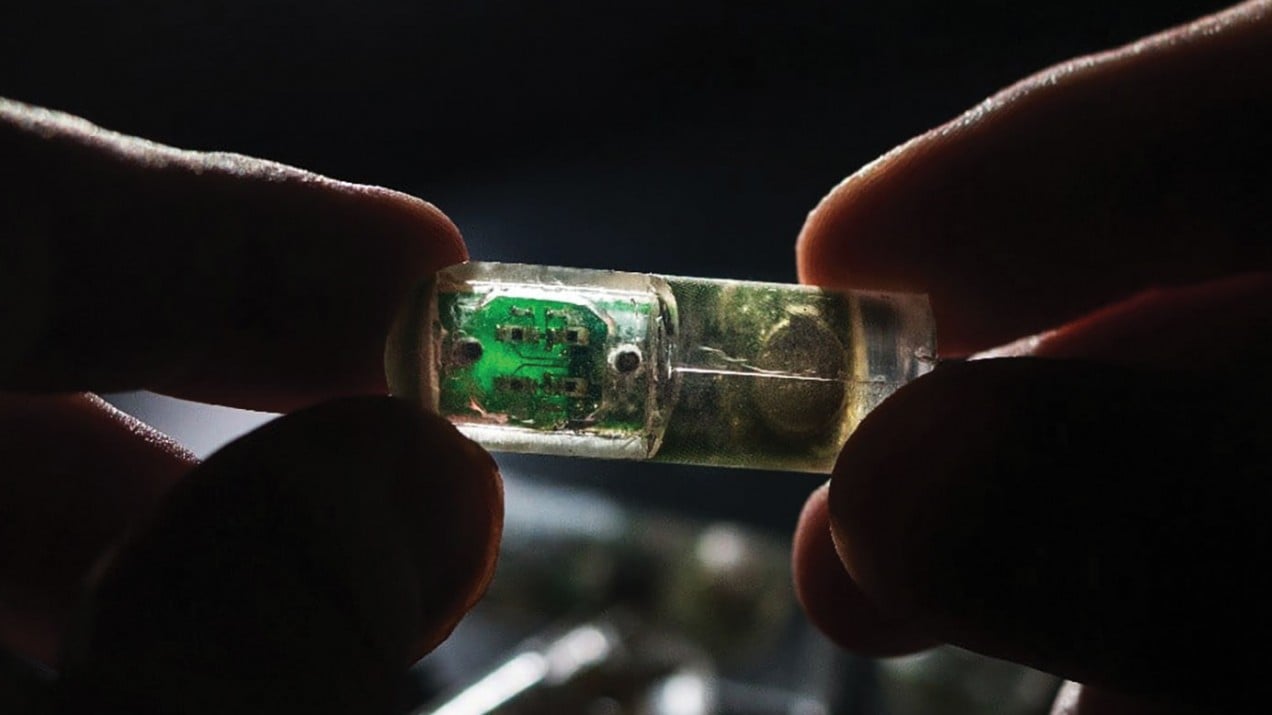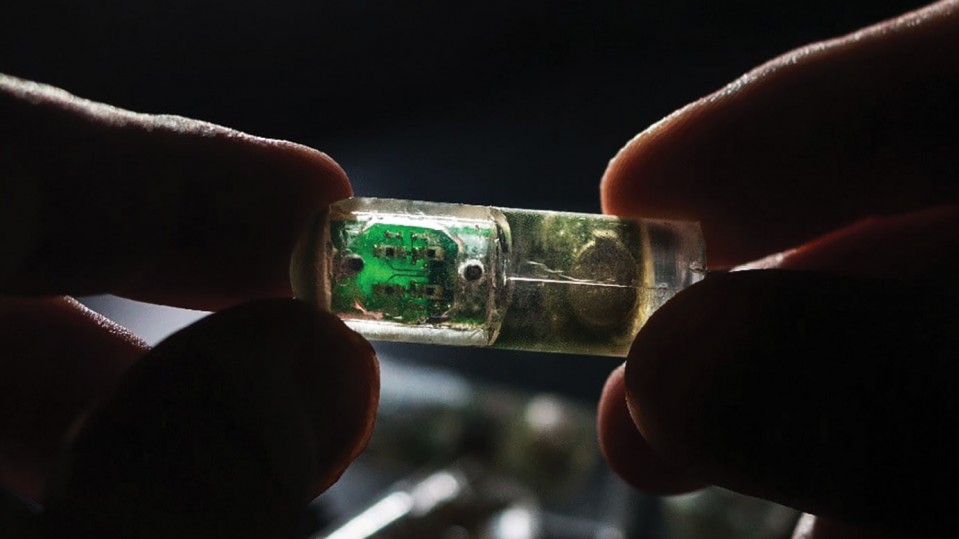

A sensor you swallow
Ingestible low-power sensors can detect gastric bleeding.

MIT researchers have built an ingestible sensor that can diagnose gastrointestinal problems like bleeding in the stomach—and relay the results to a smartphone.
To create these sensors, professors Timothy Lu and Anantha Chandrakasan, along with Mark Mimee, PhD ’18, and Phillip Nadeau, SM ’11, PhD ’16, combined engineered bacteria with an electronic chip that can translate the bacterial response into a wireless signal.
For their initial demonstration, which they reported in Science, the researchers focused on bleeding in the GI tract. They engineered a probiotic strain of E. coli to express a genetic circuit that causes the bacteria to emit light when they encounter heme, a component of blood. They then placed the bacteria into four wells of a custom-designed sensor, covering it with a semipermeable membrane that allows small molecules from the surrounding environment to pass through. A phototransistor beneath each well measures the light produced by the bacterial cells and relays the information to a microprocessor that sends a wireless signal to a nearby computer or smartphone. The researchers also built an Android app to analyze the data.
The sensor, a cylinder about 1.5 inches long, uses a battery that the researchers estimate could power the device for about a month and a half. It could also be powered by a voltaic cell sustained by acidic fluids in the stomach, using technology Nadeau and Chandrakasan developed previously.
In tests in pigs, the sensor showed that it correctly determined whether any blood was present in the stomach. Today, gastric bleeding is often diagnosed with an endoscopy, which frequently requires sedation. This technology offers a noninvasive alternative.